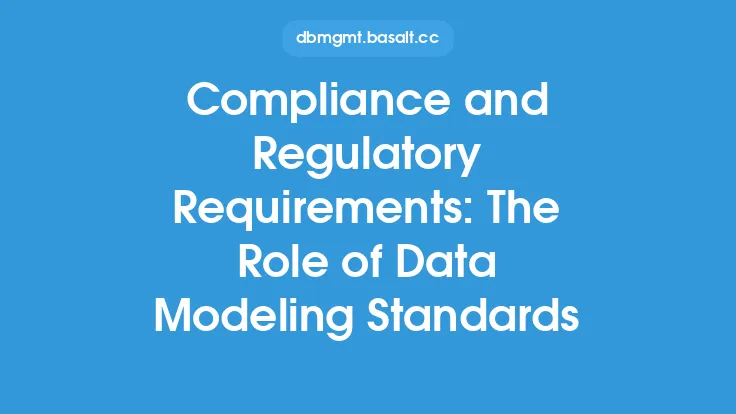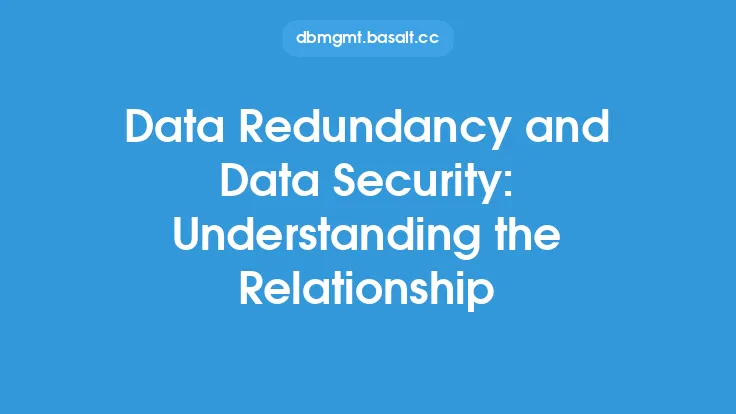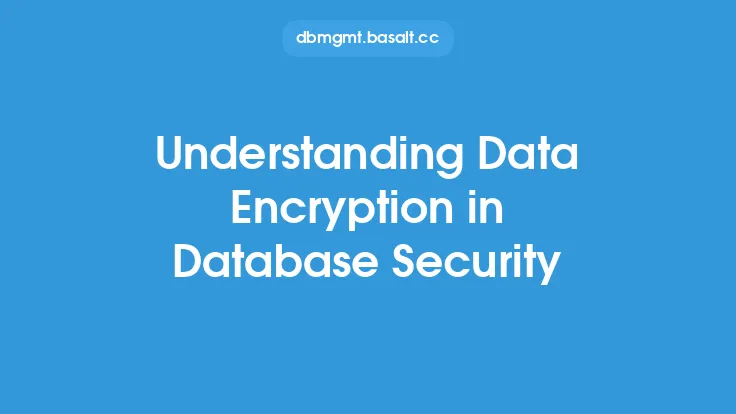In today's digital landscape, data encryption plays a vital role in protecting sensitive information from unauthorized access. As organizations continue to collect, store, and transmit vast amounts of data, the need for robust encryption measures has never been more pressing. Compliance with data encryption regulations is not only a legal requirement but also a crucial aspect of maintaining customer trust and preventing data breaches. In this article, we will delve into the world of data encryption and compliance, exploring the key requirements and regulations that organizations must adhere to.
Introduction to Data Encryption Compliance
Data encryption compliance refers to the process of ensuring that an organization's data encryption practices meet the required standards and regulations. This involves implementing encryption protocols, managing encryption keys, and maintaining detailed records of encryption activities. Compliance with data encryption regulations is essential for protecting sensitive data, such as financial information, personal identifiable information (PII), and confidential business data. Failure to comply with data encryption regulations can result in severe penalties, damage to reputation, and loss of customer trust.
Key Regulations and Standards
Several regulations and standards govern data encryption compliance, including:
- Payment Card Industry Data Security Standard (PCI DSS): Requires organizations that handle credit card information to implement robust encryption measures to protect cardholder data.
- General Data Protection Regulation (GDPR): Mandates that organizations implement appropriate technical and organizational measures to protect personal data, including encryption.
- Health Insurance Portability and Accountability Act (HIPAA): Requires healthcare organizations to implement encryption measures to protect electronic protected health information (ePHI).
- Federal Information Processing Standard (FIPS): Provides guidelines for encryption and key management in federal agencies and organizations that handle sensitive government data.
- National Institute of Standards and Technology (NIST) Special Publication 800-53: Provides guidelines for encryption and key management in federal agencies and organizations that handle sensitive government data.
Encryption Requirements for Data at Rest and in Transit
Data encryption requirements vary depending on whether the data is at rest or in transit. Data at rest refers to data that is stored on devices, such as hard drives, solid-state drives, or tape drives. Data in transit refers to data that is being transmitted over a network, such as the internet or a local area network. Organizations must implement encryption measures to protect both data at rest and data in transit. For data at rest, this may involve implementing full-disk encryption, file-level encryption, or database encryption. For data in transit, this may involve implementing transport layer security (TLS) or secure sockets layer (SSL) encryption.
Key Management Requirements
Key management is a critical aspect of data encryption compliance. Organizations must implement robust key management practices to ensure that encryption keys are generated, distributed, stored, and revoked securely. This includes:
- Key generation: Generating encryption keys that are unique, random, and resistant to guessing or cracking.
- Key distribution: Distributing encryption keys securely to authorized parties.
- Key storage: Storing encryption keys securely, such as in a hardware security module (HSM) or a trusted platform module (TPM).
- Key revocation: Revoking encryption keys that are no longer needed or that have been compromised.
Audit and Compliance Requirements
Organizations must maintain detailed records of their data encryption activities, including encryption protocols, key management practices, and compliance with regulatory requirements. This includes:
- Audit logs: Maintaining detailed logs of all encryption activities, including key generation, distribution, storage, and revocation.
- Compliance reports: Generating reports that demonstrate compliance with regulatory requirements, such as PCI DSS, GDPR, and HIPAA.
- Risk assessments: Conducting regular risk assessments to identify vulnerabilities in data encryption practices and implementing remediation measures to address these vulnerabilities.
Best Practices for Data Encryption Compliance
To ensure data encryption compliance, organizations should implement the following best practices:
- Implement robust encryption protocols, such as AES and RSA.
- Use secure key management practices, such as key generation, distribution, storage, and revocation.
- Maintain detailed records of encryption activities, including audit logs and compliance reports.
- Conduct regular risk assessments to identify vulnerabilities in data encryption practices.
- Implement remediation measures to address vulnerabilities and ensure compliance with regulatory requirements.
- Provide training and awareness programs for employees on data encryption compliance and best practices.
Conclusion
Data encryption compliance is a critical aspect of protecting sensitive information from unauthorized access. Organizations must implement robust encryption measures, manage encryption keys securely, and maintain detailed records of encryption activities to ensure compliance with regulatory requirements. By following best practices and staying informed about the latest regulations and standards, organizations can ensure the confidentiality, integrity, and availability of sensitive data and maintain customer trust.





